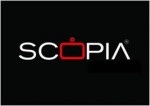Radvision, an Avaya company, has announced an addition to its Scopia videoconferencing line to enable ubiquitous video throughout in an organization without bogging down the network infrastructure.
January 29, 2013


scopia
Radvision, an Avaya company, has announced an addition to its Scopia videoconferencing line to enable ubiquitous video throughout in an organization without bogging down the network infrastructure.The Scopia 6000 Elite is a software-based multipoint control unit housed in a standard Intel (NASDAQ: INTL) server that purports to reduce the cost per port for high-definition videoconferencing by up to 50 percent and offer double the density and performance, while using as much as 75 percent less power than other hardware-based MCUs, according to the company.
“The Scopia Elite 6000 is a hybrid architecture,” noted Bob Romano, vice president of Global Marketing at Radvision. “Before now all MCUs were built on hardware specific to videoconferencing. But we are running everything in software form.”
Romano noted that a pure software solution, while more power-friendly, did not offer the same level of quality and capacity,”so we augmented it with accelerator boards to get quality, density, efficiency and price performance.”
The result is an appliance with dual 1080 pixels/60 frames per second (fps) channels for both video and data, an supports endpoint technologies such as H.264 High Profile for bandwidth efficiency and H.264 Scalable Video Coding (SVC).
“H.264 SVC allows for better quality even in environments where there is packet loss, and H.264 High Profile is a codec that provides 30 percent to 50 percent better bandwidth efficiency,” Romano said. “So, the 1080p/60fps would take 4MB in a standard unit but this would take about 2MB.”
What’s more, the Scopia Elite 6000 supports up to 80 ports on single 1U server, which is about four times the density as a standard software-only MCU. “If you take a look at racking and stacking costs, it’s cheaper to have higher density,” Romano noted.
The technology also supports any type of of endpoint, from desktop to room-based, to enable companies to have all manner of videoconference capabilities. And as video is more and more being added to unified communications (UC), the Scopia Elite 600 will be able to efficiently handle the video traffic, Romano said.
“The whole value of unified communications is the ability to have single call control to provide a rich, multimodal experience. The problem is video functionality within UC applications is nowhere near the robustness as on the videoconferencing side.”
But when used with unified communications technologies such as parent company Avaya’s Aura communications platform, all users regardless of location and endpoint can have high-quality video as part of their UC experience, he said.
The Scopia Elite 6000 line comes in four different models ranging from 3 ports to 160 ports, with a 20:1 ratio of users to ports. In other words, the 160-port model can support 3,200 desktop videoconferencing users. Prices range from $42,000 to $316,000 depending on the model.
Channel partners riding the video wave may find the Scopia Elite 6000 a welcome addition to their lineup, especially as more companies look to find even more value in their unified communications installations. “We are seeing a requirement and need for better-quality video,” Romano said. “Before the video component wasn’t critical, but that is changing rapidly.”
About the Author(s)
You May Also Like


